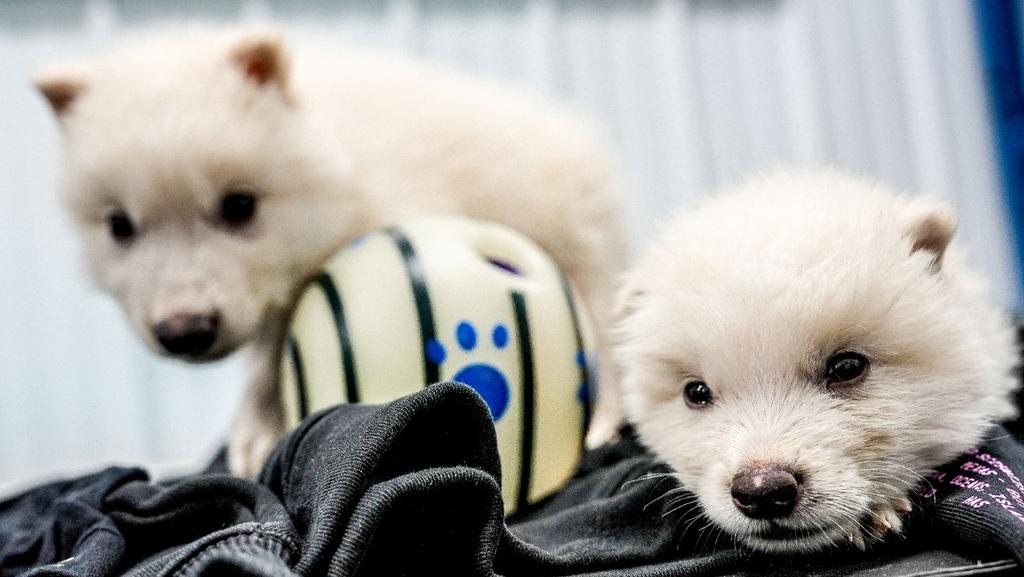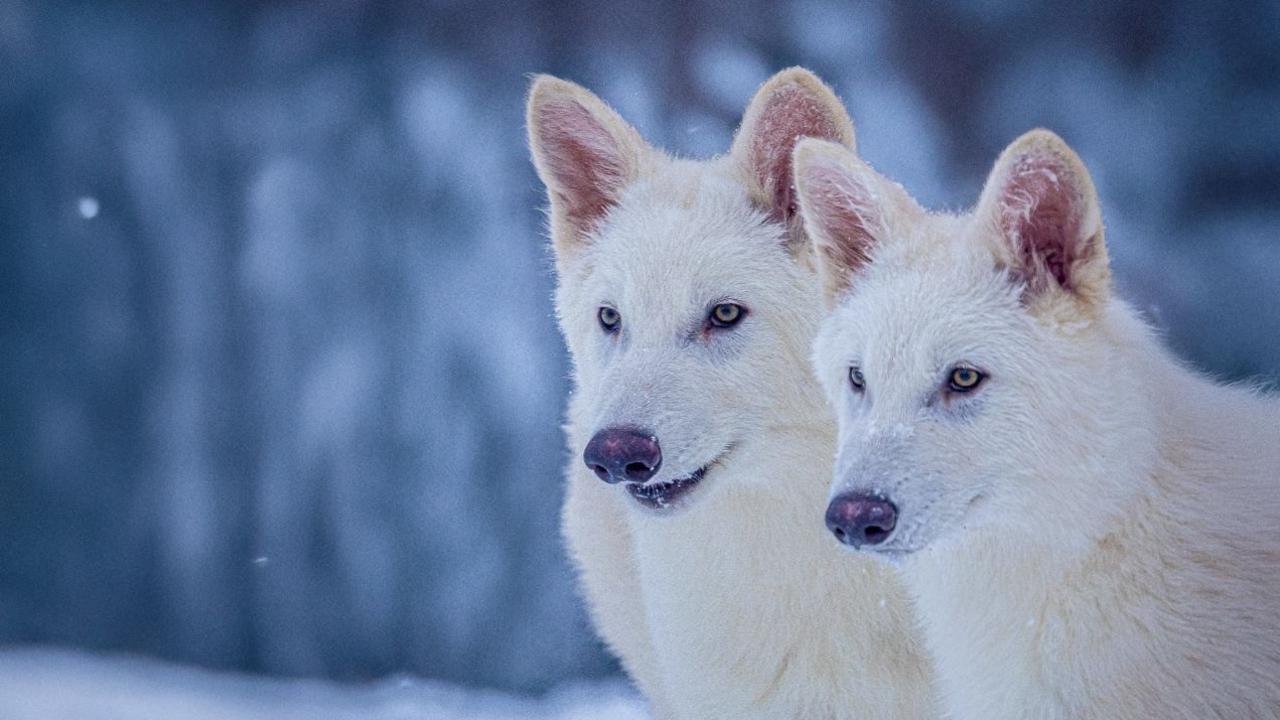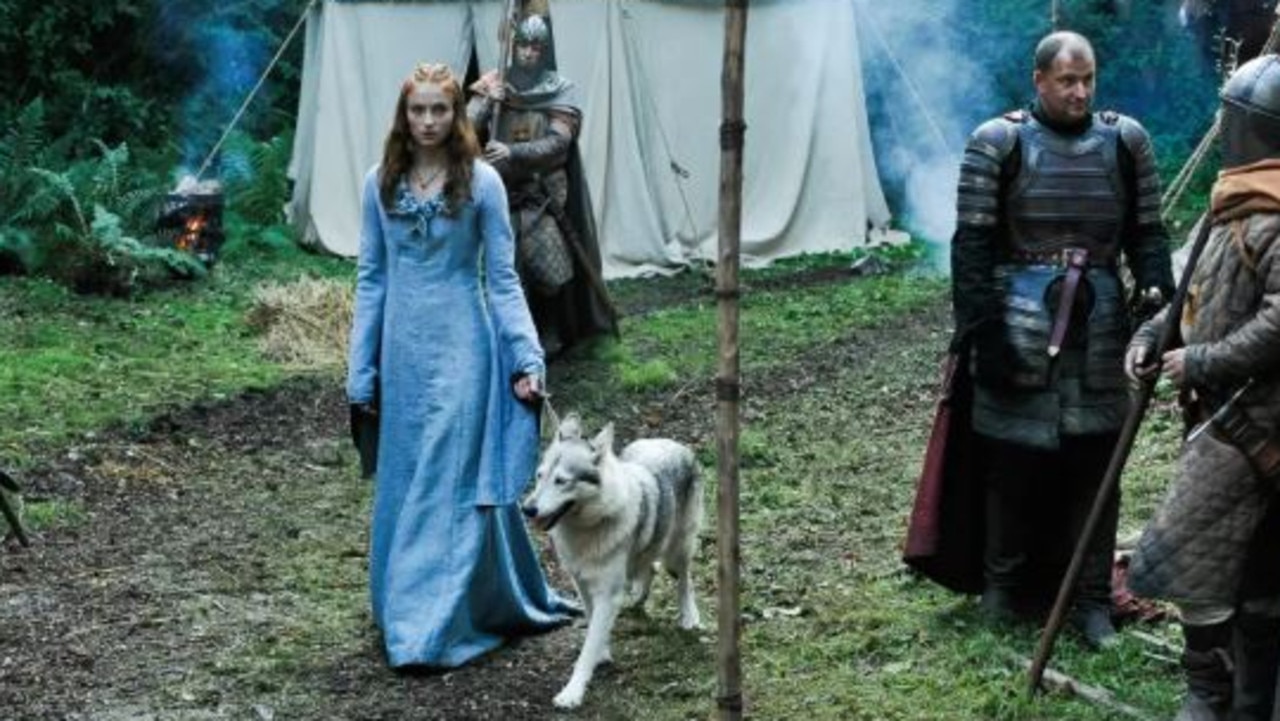
Pups cloned using dire wolf DNA hailed a ‘de-extinction’ success
The dire wolf — a species that disappeared 13,000 years ago and was made famous by the hit series Game of Thrones — is making a comeback of sorts, thanks to the first-ever so-called “de-extinction*.”
Three crossbreed wolf pups — Khaleesi*, Romulus and Remus* — were successfully born using DNA from ancient dire wolf fossils together with genes from their closest living relative, the grey wolf.
The extraordinary results were revealed Monday by Colossal* Biosciences, the same Texas-based genetic engineering* company that created the adorable colossal woolly mouse, a cross-species genetic edit between woolly mammoth DNA and that of mice. The company has claimed the wolf pups are another howling success in its wider "de-extinction" project.
“Our team took DNA from a 13,000-year-old tooth and a 72,000-year-old skull and made healthy 'dire wolf' puppies,” said Colossal CEO Ben Lamm. “It was once said, ‘any sufficiently advanced technology is indistinguishable from magic.’ Today, our team gets to unveil some of the magic they are working on and its broader impact on conservation*.”
To create the ridiculously cute pups, Colossal cloned* high-quality cell lines using somatic cell* nuclear transfer into donor egg cells, and transferred them to a surrogate* dog mum, who gave birth in January, according to the statement.
A genetic engineering company announced the birth of three wolf puppies with dire wolf DNA - but do these crossbred pups represent a successful “de-extinction”? Picture: Colossal Biosciences/Business Wire
Colossal Biosciences is now valued at $10 billion. Picture: Colossal Biosciences/YouTube
The ancient DNA was taken from a tooth fossil found in Ohio that is around 13,000 years old and an inner ear bone from Idaho, about 72,000 years old.
The two six-month-old male wolves, Romulus and Remus, and female pup Khaleesi now live on an 800 hectare “secure expansive ecological* preserve” with 10 full-time staff to give them around-the-clock care, Colossal said.
Fictional dire wolves have appeared as animal characters in HBO’s Game of Thrones and George R.R. Martin’s series of fantasy novels on which the TV show is based, A Song of Ice and Fire.
In the show, the wolves are the sigil, or mascot, of House Stark.
Khaleesi was also named after the character, Daenerys Targaryen, played by Emilia Clarke in the series.
Despite their fictional significance, dire wolves were real-world predators* that lurked across North America with mastodons* and sabre tooth tigers during the Ice Age. They hunted horses, bison and possibly mammoths, palaeontologist* Julie Meachen told the New York Times.
Dire wolves became extinct 13,000 years ago. Picture: Colossal Biosciences/Business Wire
Fictional dire wolves have appeared as animal characters in HBO’s Game of Thrones and George R.R. Martin’s series of fantasy novels on which the TV show is based, A Song of Ice and Fire. Picture: HBO
After much of their prey became extinct due to human hunters, the dire wolf followed, and the grey wolf filled the “ecological void,” Ms Meachen said.
Dire wolves were 25 per cent larger than their grey wolf counterparts*, with more muscular jaws and shoulders, biologists said.
Lamm and George Church, a Harvard Medical School biologist, founded the now $10 billion private company with the goal of bringing back the woolly mammoth, Bloomberg reported.
The company also has its eyes set on reviving the Tasmanian tiger, the dodo*, and it successfully genetically engineered the woolly mouse only last month, which shares similar curly-haired features with woolly mammoths.
Wolf pup Khaleesi, part dire wolf DNA and part grey wolf, is named after “Game of Thrones” character, Daenerys Targaryen, played by Emilia Clarke in the series. Picture: Colossal Biosciences/YouTube
“The 'de-extinction' of the dire wolf and an end-to-end system for de-extinction is transformative and heralds an entirely new era of human stewardship* of life,” Colossal scientific adviser Dr Christopher Mason said in the statement.
“This is an extraordinary technological leap in genetic engineering efforts for both science and for conservation, as well as preservation of life, and a wonderful example of the power of biotechnology to protect species.”
This story has been updated and edited. It first appeared in the New York Post and was republished with permission.
https://www.kidsnews.com.au/animals/dire-wolf-species-revived-in-worlds-first-known-deextinction-success/news-story/b91737a906be9eab94284018cb3a3a67




Share This News